Florida’s waterways provide a significant resource for wildlife, vegetation, agriculture, public health and recreation. However, in the midst of climate shifts and a growing population, water quality and quantity can affect the economy, employment, health, property values and food sources. Florida lawmakers have introduced several bills in the 2022 session that deal with this crucial resource:
- Environmental Resources
- Soil and Groundwater Contamination
- Aquatic Plant Management
- Implementation of Blue-Green Algae Task Force
- Long Term Clean Up of Harmful Algal Blooms
- Sanitary Sewer Laterals Inspection Program
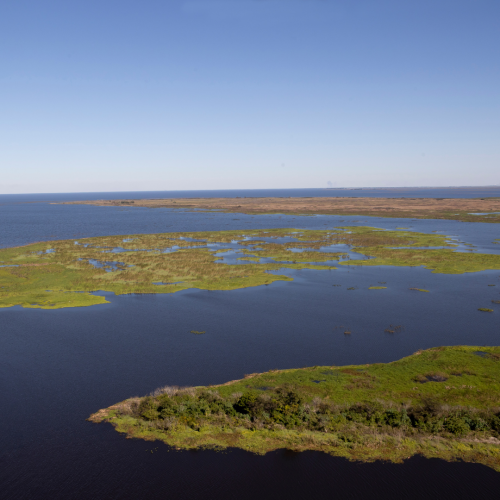 Environmental Resources
Environmental Resources
With a surface area of 730 square miles, Lake Okeechobee is the largest lake in the southeastern United States, providing drinking water for urban areas, irrigation water for agricultural lands, recharge for aquifers, fresh water for the Everglades, habitat for fish and waterfowl, flood control, navigation and many recreational opportunities.
Perhaps the water-related bill that has made the most buzz in the media this session is SB 2508, filed by Florida State Sen. Ben Albritton (R) halfway through the session through the Appropriations Committee. The bill is broad in scope and according to the staff analysis includes measures to:
- Expand the Rural and Family Lands Protection Program within the Department of Agriculture and Consumer Services.
- Authorize the Florida Department of Environmental Protection to enter into agreements with public entities to expedite the evaluation of environmental resource permits and Section 404 permits related to a project or activity that serves a public purpose.
- Require the South Florida Water Management District to certify before the release of state funds that its recommendations to the United States Army Corps of Engineers, in part, do not diminish the quantity of water available to existing legal users and will continue to adapt to meet the needs of the restored natural environment in an effort to ensure accountability regarding the use of state funds.
- Require water shortages within the Lake Okeechobee Region to be managed pursuant to rules in effect January 1, 2022.
- Require the SFWMD to take into consideration in its recommendations to the corps returning Lake Okeechobee to a minimum flow and level prevention status and returning the level of certainty for existing legal users to a 1-in-10-year level of certainty in addition to the reduction of high-volume discharges to the estuaries. (Visit this link for more background information on how the Lake Okeechobee water levels are managed.)
But, some environmental organizations say the bill prioritizes farmers getting water from Lake Okeechobee over water being sent south to the Everglades, even during a drought. This fresh water being sent south to the Everglades helps fight saltwater intrusion and recharges our aquifers.
One reason the bill has sparked controversy is that it was filed halfway through the session as a “conforming bill,” meaning it’s supposed to explain how the state will spend money without making any impactful policy changes. As such, these kinds of bills skip over committee stops that include public comment and chances for legislators to change language.
The bill, which has no House companion, was approved by the Florida Senate on Feb. 17 with some slight changes to the original language, which bill proponents say address the concerns that it gave preference to farmers. The Everglades Foundation, which originally dissented, approved of the changes.
“The amendment … removes language to which The Everglades Foundation and countless Floridians voiced strong opposition,” said Everglades Foundation CEO Eric Eikenberg in a Feb. 17 statement. “A few issues remain, but having heard the assurances from senators on the Senate floor today, we believe those issues will be addressed and resolved during the budget conference process.”
According to the bill’s staff analysis, any change to the way water is discharged from Lake Okeechobee, must:
- Not diminish the quantity of water available to existing legal users
- Not otherwise adversely impact existing legal users
- Not diminish the existing levels of service for flood protection within or outside the geographic area of the project component
- Not adversely affect adopted minimum flows and levels associated with prevention and recovery strategies
- Continue to adapt to meet the needs of the restored natural environment.
But, other organizations, like the Captains for Clean Water and Florida Conservation Voters still oppose the measure.
“Make no mistake, our opposition to (the bill) remains,” the nonpartisan nonprofit Captains for Clean Water said in a statement to TCPalm. “Even with this late-filed amendment, (the bill) is still a net negative for Florida’s environment and waterways.”
The bill will now head to budget negotiations with the House.
UPDATE: SB 2508 was passed by the House and Senate, but vetoed by Gov. DeSantis.
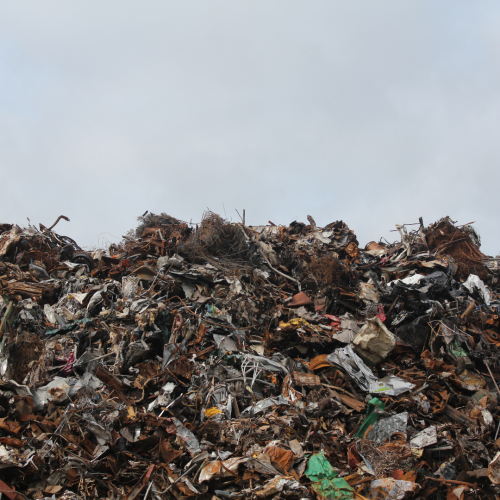 Soil and Groundwater Contamination
Soil and Groundwater Contamination
Per- and Polyfluoroalkyl Substances (PFAS) are a group of human-made chemicals first produced in the 1930s for waterproof and nonstick coatings. The chemicals, which today can be found in things like single-use food containers, nonstick cookware, firefighting foam and cleaning products, are considered “legacy chemicals” that last for a long time in the environment and can negatively affect ecosystems and humans alike. Traces of PFAS have been found in drinking water, dust and in certain fish that we eat.
Thousands of types of PFAS exist, but Perfluorooctanoic Acid (PFOA) and Perfluorooctane Sulfonate (PFOS) were two of the most widely used and studied of the group. According to the U.S. Environmental Protection Agency, health effects from PFAS potentially include increased risk of certain cancers, increased cholesterol levels, impacts on hormones and the immune system, and fetal and infant developmental effects.
PFOA and PFOS were slowly phased out of market shelves, but traces of polyfluoroalkyl substances remain detected in Florida’s waterways.
“We did not ban the problem, we just transformed it,” said Natalia Soares Quinete, an assistant professor of chemistry and biochemistry at Florida International University’s Institute of Environment.
Working on research pertaining to PFAS since 2007, Quinete recently conducted a PFAS toxicity study, finding 30 different PFAS in the tap water supply of Miami-Dade, Broward and Palm Beach counties.
Quinete located sources of PFAS from landfills, firefighting foams, makeup, clothes, rainfall and even food. Canals in which PFAS samples were taken were adjacent to Biscayne Bay, an area noted for tuna and lobster fisheries. Additionally, the study found PFOS were amongst the highest PFAS found in the sample, even though they were banned decades ago.
Michael Annable, a professor and department head of environmental engineering sciences at the University of Florida, noted the challenges of PFAS in the environment.
“The issue here is they are persistent; they don’t biodegrade and they also move significant distances in groundwater compared to other contaminants.”
Annable’s research has involved the presence of PFAS from firefighting foam, and the transportation of the chemical within soil and water.
“Concentrations of PFAS are coming off of what we call the source area, the location of spilled PFAS. These fire training areas are leaving behind foam residual, which eventually gets into the vadose zone, the area between the ground surface and aquifer. The PFAS then continues to migrate into groundwater flow,” Annable said.
The United States Environmental Protection Agency has issued a Lifetime Drinking Water Health Advisory Level of 70 ppt for PFOS and PFOA. The EPA’s Health Advisory is non-enforceable and non-regulatory, and thirty-four states have not yet set any regulatory measures, including Florida.
Proposed by Florida State Sen. Albritton (R), SB 1418 would require the Florida Department of Environmental Protection to establish rules for statewide cleanup target levels of PFAS in soil and groundwater.
The bill would also require the Office of Program Policy Analysis and Government Accountability to conduct an analysis of PFAS cleanup programs in other states and submit findings and recommendations to the Governor and Legislature by January 1, 2023. The analysis is must include:
- Funding mechanisms and sources of funding
- Funding eligibility requirements
- Current levels of funding
- An evaluation of best practices for successful cleanup programs and single remediation programs in other states and how such practices and programs address the needs of investigation and remediation stakeholders.
- A comparison of best practices for successful cleanup programs and single remediation programs in other states and cleanup and remediation programs in this state.
“I think there is a lot of interest in cleanup, but there are still right now, more questions than answers. We need to focus on having an assessment first to understand what is occurring, how often and what is the variability of PFAS in water, sediments and food,” Quinete said.
Two other bills, SB 7012, introduced by the Environment and Natural Resources Committee, and HB 1151, introduced by Florida State Rep. Tyler Sirois (R) would create a task force in the DEP that would develop recommendations for dealing with PFAS.
UPDATE: SB 1418 died in Environment and Natural Resources; SB 7012 was laid on the table, meaning it was set aside and died at the end of the session — however, its contents were substituted by CS/HB 1475, which was enrolled, meaning it has been approved by both the House and Senate and sent to the Governor for approval; HB 1151 died in Environment, Agriculture & Flooding Subcommittee.
Aquatic Plant Management 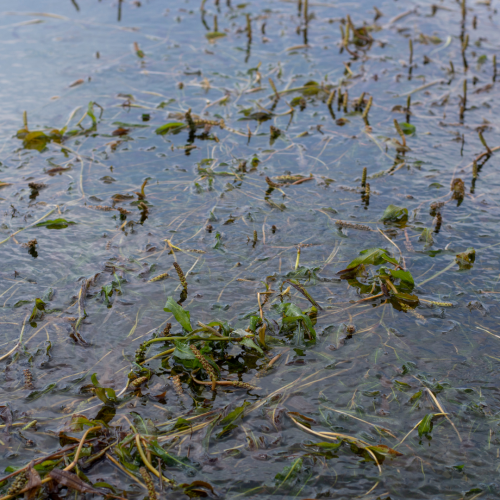
While native aquatic plants play a role in maintaining the health of Florida’s waterways, certain invasive plants can degrade water quality, impede flood control and negatively impact navigation. Hydrilla, an invasive plant from Southeast Asia that came to Florida via the aquarium trade, is one such plant that has been wreaking havoc on Lake Okeechobee.
According to University of Florida Institute of Food and Agricultural Sciences (UF/IFAS), hydrilla “often causes serious environmental and economic impacts in Florida. It produces dense canopies that can cover the entire surface of a water body and reduce plant diversity by shading out native submersed plants.”
Two similar bills, HB 579, introduced by Florida State Rep. Lauren Melo (R) and SB 1128, introduced by Florida State Sen. Gayle Harrell (R), would give $500,000 for the Florida Fish and Wildlife Conservation Commission, UF/IFAS and the Water School at Florida Gulf Coast University to study and implement invasive plant removal techniques within the Lake Okeechobee watershed.
UPDATE: HB 579 died in Appropriations and SB 1128 died in Environment and Natural Resources.
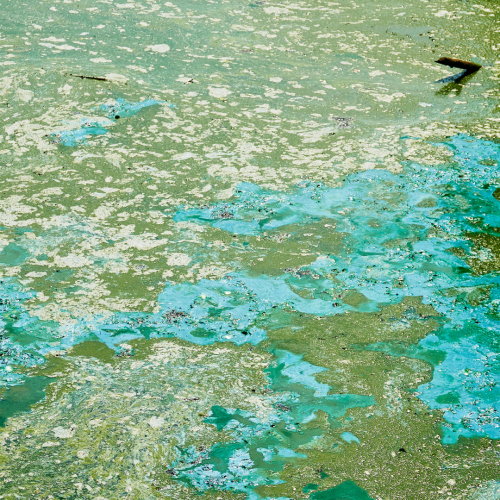 Implementation of the Recommendations of the Blue-Green Algae Task Force
Implementation of the Recommendations of the Blue-Green Algae Task Force
In 2019, the state’s Blue-Green Algae Task Force was challenged with using the latest scientific information to develop ways to expedite the reduction of nutrient pollution and cyanobacteria blooms in the state.
Based on the recommendations of the task force, two identical bills, HB 561, introduced by Florida State Reps. Joy Goff-Marcil (D) and Michael Caruso (R), and SB 832, introduced by Florida State Sen. Linda Stewart (D), would require owners of septic systems to have them regularly inspected.
Nearly one-third of the state’s population uses septic tanks, representing 12% of the total number of septic tanks in the U.S. Unlike central sewers, property owners with septic systems are personally responsible for monitoring and maintaining them.
Those systems will have a lifespan ranging from 15-25 years, but many are still used well past the recommended guidelines. This can lead to wastewater leaking into our waterways.
Florida has a relatively high water table, usually sitting just a few feet below septic tanks. The longer it takes water to filter through the ground, the more contaminants are removed. Our fast-draining landscape can lead to fewer contaminants being removed. Untreated waste making its way into the flow of water can contribute to the nutrient pollution that fuels the algal blooms.
The bills also include changes to how basin management action plans, or BMAPs are evaluated. BMAPs are used to remediate water bodies that are considered, “impaired” by the Florida Department of Environmental Protection.
In the state of Florida, a water body is considered impaired and in need of remediation if it doesn’t meet its intended use, say for drinking or recreation, Mary Lusk, an assistant professor in the University of Florida soil and water sciences department told TESI in 2021. There are currently more than 1,500 impaired waterways in the state.
“Once a water body is put on the list of impaired waters, by law we have to do something to try to fix that,” she said.
The tool scientists use to revive these waterways is known as the “total maximum daily load,” or TMDL. The TMDL is the maximum amount of any pollutant that can be added to a water body within a given time period.
Lusk calls this “the pollutant diet of the water body.” Two of the most common pollutants in Florida’s waterways are nitrogen and phosphorus, which originate from stormwater, wastewater and agricultural lands. Too much of these nutrients can result in harmful algal blooms.
In order to keep a water body on this strict diet and get it back in shape, the DEP creates basin management action plans, or BMAPs, which serve as a guide to begin repairing the waterway.
Lusk says while the plans are a step in the right direction, they’re not always perfect.
“We have a lot of BMAPs in the state that have been in existence for some time, and we’re still having water quality issues,” she said.
These bills would require that a new or revised BMAP must include a “list that identifies and prioritizes spatially focused suites of projects in areas likely to yield maximum pollutant reductions,” according to a staff analysis.
The bills would also require that for each project listed with a total cost exceeding $1 million, the Florida Department of Environmental Protection must assess whether the project is working to reduce nutrient pollution or water use, or both, as intended.
UPDATE: HB 561 died in Environment, Agriculture & Flooding Subcommittee and SB 832 died in Appropriations.
Long-term Cleanup of Harmful Algal Blooms 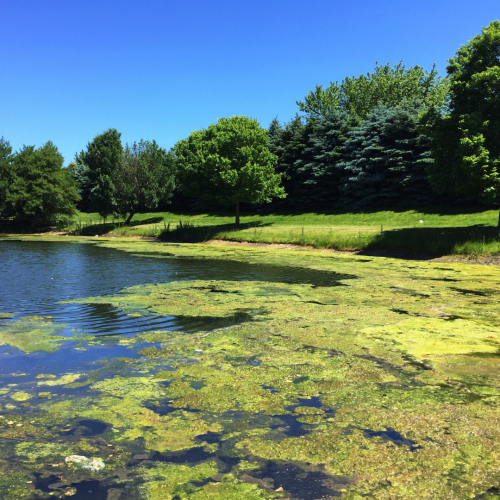
Two similar bills, SB 834, introduced by Florida State Sen. Jason Brodeur (R) and HB 421, introduced by Florida State Reps. Keith Truenow (R) and David Smith (R) would establish the “Implementation of Long-term Solutions for Cleaning Florida’s Water Bodies Act,” directing the Florida Department of Environmental Protection to take certain actions to physically remove, reduce, clean up and respond to harmful algal blooms.
In June 2021, the DEP awarded $14.9 million through its Innovative Technology Grant Program to go toward 20 projects that focus on reducing nutrients, addressing algae in waterways through algicides, nanobubble technology, soundwaves, mechanical harvesting and identifying how to better predict the formation of algal blooms.
UPDATE: SB 834 died in Appropriations Subcommittee on Agriculture, Environment, and General Government and HB 421 died in State Affairs Committee.
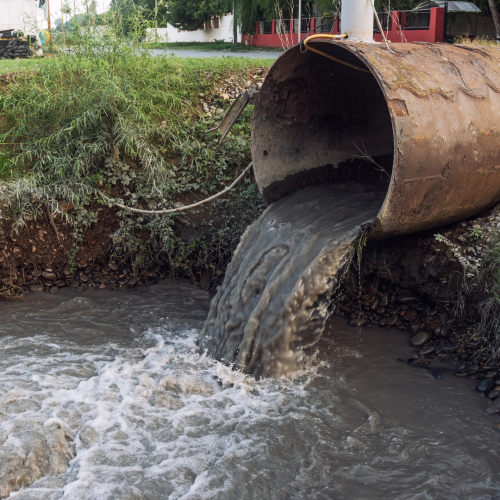 Sanitary Sewer Lateral Inspection Programs
Sanitary Sewer Lateral Inspection Programs
Sewer laterals are the pipes that connect domestic wastewater to central sewers. Unlike central sewers, sewer laterals are on private property and are therefore the property owner’s responsibility to maintain. Like septic systems, improper maintenance of these pipes could result in wastewater ending up in our waterways.
Two similar bills, HB 303, introduced by Florida State Rep. Keith Truenow (R) and SB 608, introduced by Florida State Sen. Jason Brodeur (R), would authorize “counties and municipalities to access any sanitary sewer lateral within their jurisdictions to investigate, clean, repair, recondition, or replace the sanitary sewer lateral,” the bill reads.
There currently are no statewide requirements for inspections of sanitary sewer laterals. While local governments are responsible for maintaining sewer mains and the portions of sewer laterals in public rights-of-way, the property owner is responsible for the maintenance and repair of a sanitary sewer lateral on the person’s private property. This bill would utilize remote, non-entry, camera-based inspections such as closed-circuit television (CCTV), laser profiling and sonar assessment.
UPDATE: HB 303 died in Environment, Agriculture & Flooding Subcommittee and SB 608 died in Appropriations.
 Safe Waterways Act
Safe Waterways Act
Water-based recreation plays a significant role in Florida’s economy. In 2016, 75% of Florida’s population participated in outdoor recreation activities. And it’s no surprise that visiting the beach was one of the most popular outdoor activities. Visiting freshwater spots like springs and lakes also accounted for a lot of the time people spend outside.
But recent levels of detected bacteria have officials concerned. Last year, over half of Palm Beach County beaches closed for certain periods of time due to the presence of enterococci bacteria, or E. coli. The Florida Department of Environmental Protection has verified fecal bacteria impairment in 1 million acres of coastal estuaries and 9,000 miles of rivers and streams.
According to the U.S. Environmental Protection Agency, swimming in waters contaminated by sewage can cause “nausea, vomiting, stomachache, diarrhea, headache or fever. Other minor illnesses associated include ear, eye, nose, and throat infections.”
Bacteria end up in our waterways from a variety of sources: untreated stormwater, leaks from aging or poorly functioning sewage treatment plants, leaky septic tanks and runoff from fields that contain animal waste.
Florida State Sen. Lori Berman (D) and Florida State Rep. Yvonne Hinson (D) introduced SB 604 and HB 393 respectively to adopt health standards and prescribe procedures and timeframes for a bacteriological sampling of beach waters and public bathing places.
Under the language of SB 604, a “public bathing place” is a body of water, including freshwater, saltwater, and brackish water, that is natural or modified by humans; used for swimming, diving, and recreational bathing by consent of the owner or owners. Such public bathing places include but are not limited to lakes, ponds, rivers, streams, artificial impoundments, and waters along coastal and intracoastal beaches and shores.
The bill requires:
- The Department of Health to issue health advisories related to the results of bacteriological sampling
- The DOH to adopt by rule a sign containing certain language, to be used when it issues a health advisory against swimming in beach waters or public bathing places due to bacterial contamination.
- The DOH to require that health advisory signs be posted around affected beach waters or public bathing places until bacteria levels meet DOH standards.
- That municipalities and counties are responsible for posting and maintaining health advisory signs in affected beach waters and public bathing places that they own.
UPDATE: SB 604 died in Community Affairs and HB 393 died in Professions & Public Health Subcommittee.
Other related bills:
- Well Stimulation – SB 208 (died in Environment and Natural Resources)
- Water Resources Management – SB 198 and HB 349 (SB 198 died in Community Affairs and HB 349 died in Agriculture & Natural Resources Appropriations Subcommittee)
- Environmental Management – HB 965 and SB 1426 (HB 965 has been enrolled, meaning it has been approved by both the House and Senate and sent to the Governor for approval; SB 1426 was laid on the table, meaning it was set aside and died at the end of the session — however, its contents were substituted by CS/CS/CS/HB 965, which has been enrolled)
- Nutrient Application Rates – HB 1291 and SB 1000(HB 1291 was laid on the table, meaning it was set aside and died at the end of the session — however, its contents were substituted by refer to CS/CS/SB 1000, which was enrolled; SB 1000 has been enrolled, meaning it has been approved by both the House and Senate and sent to the Governor for approval)
- Outstanding Florida Springs – SB 1584 (died in Environment and Natural Resources)
- Caloosahatchee River Watershed – HB 585 and SB 1792 (HB 585 died in Environment, Agriculture & Flooding Subcommittee and SB 1792 died in Environment and Natural Resources)